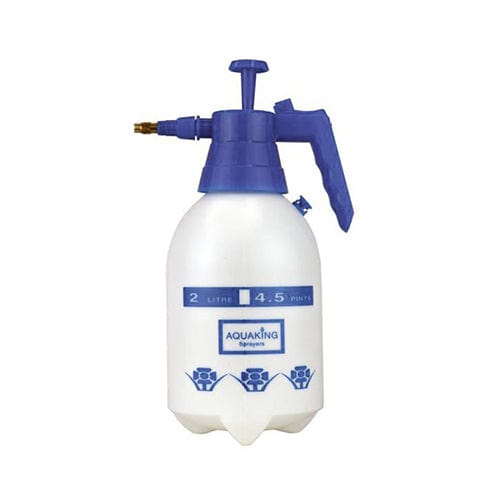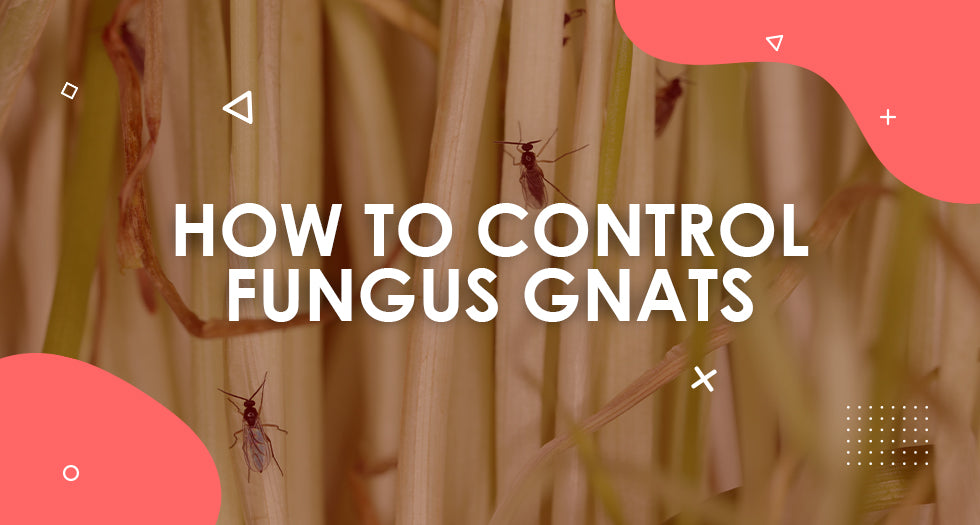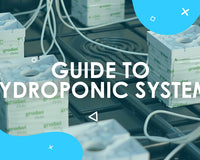What are fungus gnats and how do I get rid of them?
Fungus gnats are small, flying insects that slightly resemble a mosquito. They are members of the Sciaridae family and are also known as sciarid flies. They favour warm, moist environments, feed on decaying organic matter and lay their eggs in soil.
These insects can become a nuisance to growers because the larvae can feed on roots as well as rotting organic material. This can lead to root damage and poor plant health, especially in seedlings. Adult flies can also cause annoyance by flying around the grow room or garden, and pose a risk to plant health because they can carry and spread disease.
If you notice a growing population of fungus gnats, you should take action to avoid it becoming a full blown infestation. Luckily, there are some simple steps that you can take to get rid of them.

Fungus Gnat Life Cycle
Firstly, let's take a look at their life cycle to help us understand their biological phases and how and when they can cause damage to your plants.
Life for a fungus gnat starts in the form of an egg. These gnats can lay up to 300 eggs over the course of their life. Eggs typically take 4-6 days to hatch into larvae. When the eggs hatch, they start to feed and can attack the roots of your plants.
After a couple of weeks the larvae begin the transition to the pupal stage. The pupal stage is very short lived, and within just a few days the fungus gnats will hatch into their adult state.
Adult fungus gnats are not really anything to worry about, as they are relatively harmless and don’t tend to cause much damage other than their risk of spreading disease. However, eradicating them is essential as when they are in the larval stage they will cause damage to the root zone. This can result in stunted growth, yellowing leaves and wilting depending on the severity of the infestation.
How to prevent fungus gnats
Prevention is always the best form of pest control. As fungus gnats favour damp, humid conditions, keeping your plants too wet is a guaranteed way to introduce fungus gnats into your grow space.
Using pots with ample drainage is a great way of minimising this risk. Fabric pots like the JunglePot Air, and netted pots like the Idropot help promote lateral airflow which prevents the substrate from staying too moist for extended periods of time.
Pesticides and other changes to your grow environment can also help to control fungus gnats. By following the steps below, you can learn how to identify and control these pests.

JunglePot Air
|

Guard'n'Aid Insect Catcher
|

Essentials Illuminated Magnifier
|
Step 1: Identification
Spotting fungus gnats before they cause a nuisance is relatively easy. Growers most commonly notice these insects congregating around the base of plants and in the pots. They generally become more mobile when you start moving the plants around, or water them.
Identifying them is the first step to controlling the issue. Sticky traps like the Guard’n’Aid Insect Catchers can be placed close to the affected areas of the grow space. Insects have been found to be attracted to the colour yellow which helps draw them to the trap. Once the trap has caught a few insects, you can remove it and begin to identify the pest.
Adult fungus gnats are a brownish grey colour and have a yellow abdomen. Their wings cover the length of their backs and they have long antennae. Adults tend to be no more than 4mm in length.
The larvae look like translucent or slightly white maggots, have a distinguishable black head and grow to approximately 6mm in length.
Once you have identified them, you can begin to consider which pesticides will be best for your grow environment.
Step 2: Use a Pesticide
There are many pesticides on the market to help you tackle an infestation such as Pyrethrum and Tanlin.
Pyrethrum is regarded as one of the most effective tools for controlling a fungus gnat problem. It is a strong insecticide that’s extracted from chrysanthemum plants. This natural chemical can be sprayed on food crops with no issue, and will not cause any negative effects to your plants. Dilute accordingly and spray the substrate as well as the plants a couple of times a week.
When using Pyrethrum, we have to consider the lifespan of the fungus gnat when gauging how long to treat for. For best results, repeat treatment for 3-4 weeks to ensure you have interrupted the life cycle.
Tanlin is another great tool for controlling fungus gnats. Simply add a few drops to your reservoir and as the plants are fed, the Tanlin will kill any larvae or eggs present in your root zone. Tanlin is safe to use from the start of the grow cycle, right until the very end. It is suitable for use in soil based systems, or in any hydroponic setting.

Agropharm - Pyrethrum 5EC
|

CX Horticulture Tanlin
|

Plastic Syringe
|
Step 4: Add Aqua Clay Pebbles
Much like we discussed in our previous posts on aphids and thrips, adding a thin layer of clay pebbles to the top of your pot will make it harder for the gnats to lay their eggs, thus interrupting the life cycle.

CANNA Aqua Clay Pebbles
|

VVIND Systems - 406mm
|

Aquaking Pressure Sprayer
|
Step 5 – Change your environment
As we know, fungus gnats favour damp, humid conditions. Elevated temperatures will also speed up the life cycle of the gnats. Stagnating water, poor air circulation and extraction can also contribute to their presence.
Taking the above into consideration, if you lower the temperatures of the grow space, and reduce the amount of water being fed to the plants, you can help tackle the issue.
Despite having wings, fungus gnats are not the most talented fliers. Having strong air flow and extraction can really help disrupt these pests.
If the source of the outbreak is observed in your reservoir, make sure that any circulation pumps you are using are operating correctly. If you do not have a circulation pump in your reservoir, introduce one and this will also help minimise the threat of a fungus gnat outbreak.

SHOP NOW READ MORE






